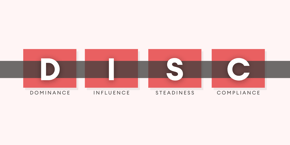The modern workplace is a fast-paced, highly competitive environment. We work harder for longer to maintain a competitive advantage in a global market where the smallest of margins can affect the success or failure of any given venture.
The world we have created has evolved faster than we have. It’s no wonder that our primitive brains can’t sleep due to the blue light of our devices, and our hormones are misfiring under the constant stress of over-stimulation and stress.
Add to this the stress and uncertainty of a global pandemic; the mental well-being and safety of your employees have never been more critical to the success of the recovery efforts of every business.
Importance of wellbeing.
The importance of wellbeing in the workplace cannot be overlooked. It stands to reason that a tired, highly-strung, and sickly workforce isn’t going to deliver outstanding results, let alone inspired ideas to move your business forward.
Just as recognizing the importance of staying home when physically sick, mental wellness must be recognized, nurtured, and protected for the long-term health of your business. The emphasis is increasingly on companies to be prepared to spot and help employees suffering from mental illness and stress-related issues.
8% say their organisation is ‘very good’ at preventing employees from feeling stressed and/or anxious about work.
Source: ACAS.org
What can businesses do to become more aware and proactive regarding mental health? Do you know what support your employer has for your mental health?
State of the Wellbeing in the Workplace.
Recent studies show a positive reduction in the average number of sick days taken by employees. However, the stigma of illness continues to raise the issue of presenteeism, which can result in a similar dip in productivity as being absent.

Results show that mental health is cited as one of the largest reasons for long-term absences at 59%, while 37% are stress-related. With an estimated 12.5 million days lost to stress-related absences, developing a robust and effective mental health program is a financial investment, as well as a duty of care.
The top two causes of stress, heavy workloads, and management styles can be tackled by employers to increase work satisfaction and reduce stress. Although management styles may be engrained and politically sensitive to maneuver, tackling excessive workloads can be quickly actioned. Starting a dialogue internally on how to better distribute and complete goals across teams is a great first step to creating an open environment to air grievances and workshop solutions.
Policy in practice
With three in five employees reporting mental health issues directly related to the workplace, the scale of the challenge must not be underestimated. Consistent, integrated communication to promote positive mental health in the workplace is an excellent place to start, but policy must be put into practice.
59% of long-term absences are due to mental ill health, yet only 25% of line managers can spot the early warning signs.
Source: CIPD
The ability to recognize the early signs of stress and mental illness by those who work closest with employees (usually line managers and middle management), is often overlooked. Dedicating the time and training investment into developing these skills within your workforce can aid an early intervention to offset triggers and work through issues before they become a barrier to productivity.
Addressing wellbeing at work increases productivity by as much as 12%.
Source: Mentalhealth.org
The warning signs of stress and mental illness from mind.org. Your employees may be:
- finding it hard to make decisions
- constantly worrying
- avoiding situations that are troubling them
- snapping at people
- biting their nails
- picking at their skin
- unable to concentrate
- eating too much or too little
- smoking or drinking alcohol more than usual
- restless, like they can’t sit still
- being tearful or crying
Advice from HSE on how to assess your team.
Practical tips on how to reduce stress in the workplace according to quantumworkplace.com that you can apply today:
- Encourage exercise and healthy living
- Re-energize the office with positive colors and plants
- Be flexible with working hours and remote working
- Encourage social activities to team build
- Provide a quiet breakout space
- Provide external support for your team, such as a company mental health scheme
- Say ‘well done’ more often. Recognizing the hard work of your employees will increase work satisfaction and lower stress
How technology can help.
Finding the time as a manager to dedicate to learning a new skill and monitoring each member of your team is always challenging. Thankfully, modern technology can offer assistance.
72% of employees think that it is a manager’s role to recognise and address stress and anxiety in the workplace.
Source: ACAS
There is now a multitude of apps, software, and systems to alleviate the pressure of manual tasks and monitoring to allow managers and employees to get from under the dark cloud of ‘busy work’.
sales-i takes the heavy lifting out of manual administrative tasks, speeds up CRM updates, and creates detailed, specific reports that can save users 165 minutes a day. This means not having to work through lunch breaks or stay late to keep on top of the day-to-day admin, allowing vital time to recharge and minimize the risk of burnout.
“High-performing people are people who are cared for and who care for themselves. Mental health and high-performance work together.” Simon Blake OBE, Chief Executive of Mental Health First Aid (MHFA) England, managers.org
The benefits of giving the best technology to your employees are twofold: they know they are being invested in and are valued; plus, they have some of the frustrating parts of their day-to-day taken off their shoulders.
sales-i, working smart towards work-life balance.
At sales-i, all we do is work to help you sell smarter. Our sales enablement SaaS software delivers actionable insights to highlight upsell and cross-sell opportunities, alert users of changes in regular spending patterns, and much more.
Our system releases users from manual report building, data analysis, and typing up extensive notes into the CRM, tasks that can contribute to stress and cut into much-needed relaxation time. Plus, the automated updates, autopilot map features, and offline capabilities of sales-i mean your team can switch off when they clock off safely in the knowledge that sales-i is always on.
If you would like to discover how sales-i can transform your workplace with our sales intelligence tool, contact us today.




